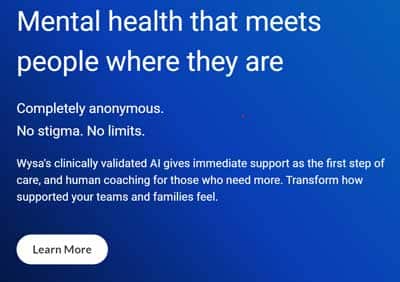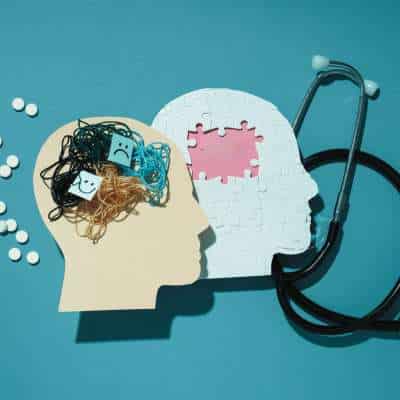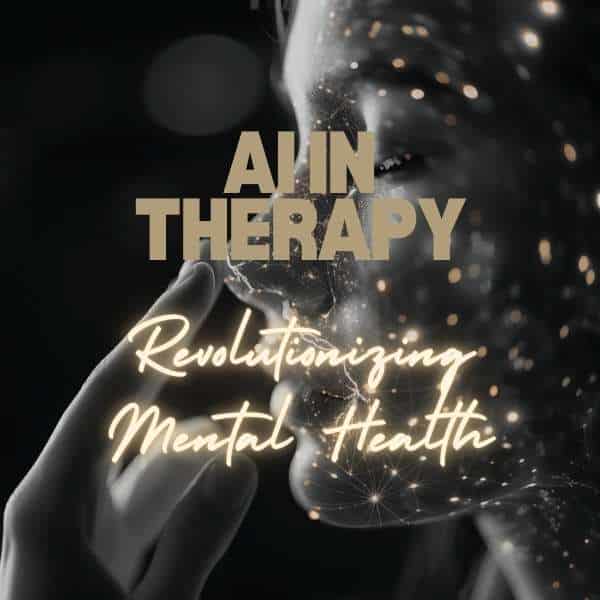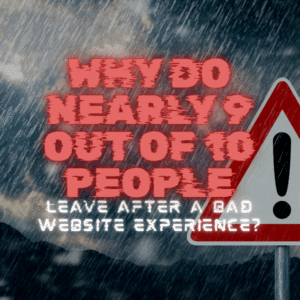Why you can trust Sunlight Media
- Expertise and Experience:Our content is crafted by seasoned professionals with extensive experience in digital marketing, ensuring you receive accurate and actionable advice.
- Unbiased Information:We provide impartial insights and recommendations based solely on what's best for your business, without any hidden agendas or promotions.
- Thorough Research:Our articles are backed by comprehensive research and the latest industry trends, ensuring you stay informed with reliable and up-to-date information.
- Transparency and Honesty:We believe in complete transparency. We disclose our sources, methodologies, and any potential conflicts of interest, so you can trust the integrity of our content.
- Continuous Improvement:We constantly review and update our content to reflect the latest developments in digital marketing, so you always have access to the most current and relevant information.

Artificial intelligence (AI) is becoming a key player in the mental health care industry, apps like Wysa have been gaining traction since its initial launch in 2020 – proving its necessity during the devastating COVID-19 pandemic. Wysa boasts a booming 1.5 million downloads and app features such as chatbots, journaling tools and self-care modules.
Some other apps available include Woebot and Replika, both equally as popular. AI therapy chatbots typically use either natural language processing and digital phenotyping to provide their clientele with mental health support tailored to them personally by utilising their digital footprint and chatbox responses. The usage of AI in therapy is heavily debated, whilst on one hand it provides clients with 24/7 support and is cheaper than that of traditional therapy sessions, concerns over data privacy and the ethics of using a machine program over humans.
Although the current scope looks positive for AI to further grow and adapt in this industry, expanding its uses from the confines of an app to assisting human therapists
The Current Market
One of the major perks of living in a digital era like the 21st century is that we have the technology to revolutionize every industry we have our hands in, including the mental health sector. One of the leading avenues for Artificial Intelligence (AI) implementation is through the usage of mental wellbeing apps. The sector saw a substantial surge in new users during Covid-19. Using therapy apps provided people with a form of support in hard times, and the advent of AI has allowed these apps to become even more personal by interacting with the users themselves.
And the question on everyone’s mind is can AI really bridge the gap between technology and emotional care?
Whats the deal with Wysa?

Currently Wysa boasts a proud userbase of over 1.5 million downloads, having its’ popularity skyrocketing during the coronavirus pandemic following the official recommendation given by ORCHA (The Organisation for the Review of Care and Health Apps) in order to support those who had been mentally affected by the worldwide lockdown. The app offers a variety of features and components designed to support a users’ mental health, including Cognitive Behavioural Therapy (CBT) chatbots, emotional journaling tools, self-care learning modules, and the option for one-on-one sessions with therapeutic professionals who have been vetted by the Wysa team. These features make Wysa an easily accessible resource for those seeking a convenient and versatile mental health support outlet.
The AI therapy competitors
The present AI-led therapy app market is now heavily populated with numerous competitors emerging alongside Wysa. One popular alternative to Wysa is Woebot, an app that specialises in applying cognitive-behavioural therapy (CBT) techniques to help manage a user’s mood and well-being. Woebot’s unique selling point lies in its feature to schedule AI-therapy sessions, helping their clientele to make time for mindfulness and aid in facilitating a more structured lifestyle. This can be particularly beneficial for clients who seek a reliable continuous method of support with scheduled notifications. Woebot offers a dynamic and engaging approach to mental health care, making it a valuable option for those looking to integrate AI-driven therapy into their daily lives in manageable increments.
AI in therapy is not limited to dedicated apps either; people have also started utilized pre-existing chatbots for mental health support. One notable example of this is Replika, a customisable AI chatbot, created in 2017, that allows users to choose the character they’d like to speak to – even marketing themselves as a site where you can “find the perfect companion” on. Over the past seven years, Replika has continuously evolved its AI chatbots to be more and more complex, and states their current iteration of chatbots are able to learn and mimic a person’s texting style. Although Replika’s primary function is to be a casual chatbot, users have found it effective in providing mental health support. The responses from Replika strike a balance between companionship and therapeutic advice, making it useful for those who prefer a more informal form of help—more like a friend than a therapist.
Another program that can be used similarly is ChatGPT. Widely accessible to hundreds of thousands of users, ChatGPT is one of the largest language models currently available. It provides a space for users to freely express their emotions, offering cohesive and adaptable responses. This makes ChatGPT a valuable tool for those seeking an AI-driven companion that can provide multiple sources of help from supporting their mental well-being to writing their grocery list. By offering a platform for open-ended conversations, a rarity in most cheap AI chatbots, ChatGPT allows users to explore their thoughts and feelings in a supportive environment, which bridges the gap between casual interaction and meaningful support in therapy.
Pricing
One of the key conveniences of AI therapy is that it is often posed as something critically cheaper than human-led therapy. By factoring out expenses like office rental, storage space rental, stationery and salary expenditure, theoretically, AI therapy should be much cheaper by a large margin. Whilst there are free apps and websites like EarKick, that provide users with an AI journal and emotions tracking. However, most well-made AI therapy apps provide both a free and paid trial.
The free trial often allows users to track emotions, record feelings and provides them with a basic selection of self-help videos. Those who can afford the more premium subscription plans are given a whole host of features to utilise. Wysa currently offers a $79.99 annual plan, whilst apps like Mindspa or Youpa run slightly cheaper at $49.99 or $69.99 respectively.
The Technology

With AI robotics being utilized in surgical procedures and medical diagnoses, it was inevitable for interest to grow in applying artificial intelligence to psychology. However, this new venture presents its own unique challenges. Integrating AI into the field of psychology requires technology that can adapt to a variety of situations with differing levels of severity, as well as mimic empathy and human interaction. Currently, AI is being employed in patient care through three main avenues: digital phenotyping, natural language processing, and chatbots.
Digital phenotyping involves AI recording and monitoring a person’s online posts and technological data to assess correlations with pre-existing data on mental illnesses. This could, for example, take the form of digitally logging the duration of exercise or physical activity the client has engaged in daily, or connecting screen time data that’s automatically recorded by a phone into the app. By analysing this data, AI can identify patterns and indicators of mental health issues in an individual, providing valuable insights that can aid in early detection and intervention. Digital phenotyping also includes to tracking sleep patterns and other physiological data collected through wearable devices like smart watches, this can help provide a comprehensive view of the client’s mental state through all forms of passive data available.
Natural Language Processing
Natural language processing (NLP) is a subsection of digital phenotyping that focuses exclusively on the language used by clients in digital engagement. NLP allows AI to analyse the tone, emotion, and content of a client’s messages or searches, pre-emptively detecting signs of mental distress or improvement for machine learning (ML). By examining linguistic prompts, NLP can help identify psychological conditions such as depression, anxiety, or bipolar disorder, making it a powerful tool for mental health professionals who focus on round the clock analysis. This technology also enables real-time monitoring and feedback, allowing for timely interventions for emergencies and adjustments to treatment plans.
Let’s chat about Chatbots
Chatbots are another significant application of AI in therapy. These AI-driven programs enable direct interaction with clients, asking questions, analyzing responses, and adjusting treatment plans based on the information obtained. In AI therapy, chatbots typically fall into two categories. The first type uses pre-written, close-ended responses that facilitate quick back-and-forth conversations, allowing the AI to easily comprehend the basics of a situation and provide prompt assistance. A key benefit of this type is that clients can select their answers without having to type everything out, making the interaction more convenient. However, this approach can sometimes result in clients not finding the exact answer or sentiment they were looking for, as the responses may not perfectly match their needs.
The second option allows users to write their answers in response to open-ended questions, giving them the space to fully express their feelings and direct the therapy according to their needs. Chatbots of this type often feel more “human” in their approach, bridging the empathetic and personal feel of human-led therapy. By allowing for more nuanced and personalized responses, these chatbots can provide a deeper level of support and understanding, closely mimicking the experience of interacting with a human therapist. They can also adapt more readily to the specific needs and contexts of each client, offering tailored advice and interventions.
The integration of AI into psychology is a promising development that holds the potential to revolutionize mental health care. By leveraging technologies such as digital phenotyping, natural language processing, and chatbots, AI can provide more accurate, timely, and personalized care to individuals struggling with mental health issues.
As these technologies continue to advance, they will likely become an increasingly important component of mental health treatment, offering new avenues for support and intervention that were previously unimaginable. While challenges remain, particularly in ensuring the ethical use and empathy of AI systems, the potential benefits of AI in therapy are vast, offering hope for more effective and accessible mental health care in the future.
Professional Application

A 2022 study published in npj Digital Medicine conducted an extensive meta-analysis of multiple systematic reviews evaluating various AI models used for diagnosing mental disorders. This comprehensive review encompassed a broad spectrum of conditions, including schizophrenia, obsessive-compulsive disorder, and mild cognitive impairment, highlighting the versatility and applicability of AI in this field. The meta-analysis concluded that AI has demonstrated significant utility and efficiency in organizing symptoms and aligning them with relevant diagnoses. These findings underscore AI’s potential to enhance diagnostic accuracy and streamline the process of identifying mental health conditions across a diverse range of disorders.
In Healthcare
In a world where over a billion people in higher and upper-middle-income nations alone are affected by mental health issues, the use of AI in psychological settings can help ease the demand. Currently, the Royal College of Psychiatrists (RC Psych) estimates that nearly a quarter of mental health patients are waiting for approximately three months to start any mental health treatment, citing the lack of consultant psychiatrists and mental health professionals available as the primary reason. This delay in treatment can exacerbate mental health issues, making timely intervention crucial.
The Alan Turing Institute envisions a future where AI can accurately predict an individual’s risk for various diseases and pinpoint the specific factors in their life that contribute to this risk. This capability will provide psychiatrists with valuable insights, enabling them to more effectively direct patients toward the most suitable therapies and connect them with the appropriate medical practitioners. By integrating these advanced AI tools, healthcare professionals will be better equipped to offer personalized and targeted treatment plans. This predictive power can also help in preventive measures, allowing for early intervention and potentially reducing the incidence of severe mental health conditions.
Therapeutic Alliance

One of the biggest factors that discourages people from using AI-headed therapy is the lack of empathy or emotional bond that would be felt during human-led therapy sessions. However, a recent study, consisting of over 1,200 participants, has shown that within just 5 days of regular usage, users of Wysa’s cognitive behavioural therapy AI bot were able to form a therapeutic alliance with the bot itself.
Patients responded to the bot as if it were human, showing marked appreciation for the computer program. One quote from the transcript shows a user writing, “You’re the only person that helps me.” Although a 2023 study has warned that there were signs of an unhealthy dependence on the chatbot over the real people in their lives, this often led to feelings of guilt when users were unable to keep up with the notifications and alerts the AI therapy apps provided.
This dependency highlights a critical aspect of AI in therapy: the balance between technology and human interaction. While AI can provide immediate support and help manage symptoms, it is crucial to ensure that it complements rather than replaces human therapists. The goal should be to use AI to enhance the therapeutic process, making mental health care more accessible and efficient while maintaining the human touch that is essential for deep emotional healing.
AI as an Assistant
Currently, AI is being employed directly in client interactions, but it also has the potential to support therapists behind the scenes. Some of the roles and responsibilities AI can prove useful extend from literature review to partaking in pilot studies.
AI has the ability to streamline and simplify the longer time-taxing tasks to allow them to spend more time with a patient, by perhaps allowing AI to make live-time notes for them as the conversation flows. Programs and websites that offer these features include Lark Minutes, an application that is capable of real-time transcribing in multiple different languages, proving useful for global meetings. Alternatively, Fireflies.ai not only transcribes notes but is able to summarise them, helping therapists to easily organise and file through their work.
Therapists could also utilise AI in scheduling sessions as necessary, passing off administrative tasks to computer robots to allow therapists to hone in on the aspects that AI wouldn’t be able to replace. The American Psychological Association highlights that the key difference between an unbiased program and a human’s instinct allows therapists to cross-check their responses with AI and deliberate whether changes are necessary. This collaborative approach can enhance the therapeutic process, combining the precision and efficiency of AI with the empathy and intuition of human therapists.
AI can also assist in monitoring patient progress over time. By analysing data from sessions, AI can identify trends and changes in a patient’s condition, providing valuable feedback to therapists. This can help in adjusting treatment plans more accurately and promptly, ensuring that patients receive the most effective care.
Moreover, AI can play a significant role in training and educating therapists. By simulating various scenarios and patient interactions, AI can provide a safe and controlled environment for therapists to practice and refine their skills. This can be particularly beneficial for new therapists, offering them valuable experience and confidence before they interact with real patients.
AI in Alternative Therapy

Currently, the most common form of therapy that AI can replicate is Cognitive Behavioural Therapy (CBT). CBT is a form of psychotherapy that involves discussing and challenging negative thoughts and dispelling harmful beliefs about a situation or aspect of one’s life. Often referred to as “talking therapy,” CBT relies on the therapist’s perspective on the patient’s situation, offering different ways of reframing it to help reshape their view on life. This process involves identifying and addressing cognitive distortions, developing coping strategies, and practicing behavioural changes to improve mental health.
However, AI therapy is not limited to the confines of CBT. Early research has shown promising possibilities for integrating artificial intelligence with virtual reality (VR) to support clients with post-traumatic stress disorder (PTSD) or phobias. Patients with PTSD or phobias are often directed towards exposure therapy, a treatment method that involves gradually exposing the patient to their fear in a controlled manner. This exposure hierarchy is ordered from the least to the most frightening scenarios. For example, a patient with arachnophobia might rank looking at pictures of spiders at the bottom of the hierarchy while holding a spider would be at the top. Over time, patients move along this hierarchy, progressively facing more challenging situations to reduce their fear response.
Using VR for exposure therapy offers a more economical and controlled way for patients to confront their fears. For instance, phobia patients could experience the sensation of flying without the need to purchase expensive plane tickets. Studies have detailed how AI can enhance these therapies by incorporating Machine Learning (ML) algorithms to analyse biomarker data from patients during VR exposure therapy. By monitoring physiological responses such as heart rate and cortisol levels, AI can identify patterns and generalize how patients react to different levels of exposure.
The ultimate goal is to enable AI to actively use this biodata during exposure therapy sessions to adjust the intensity of exposure in real time. This adaptive approach ensures that the therapy is tailored to the patient’s current state, providing a more personalized and effective treatment. For example, if a patient’s heart rate spikes during a VR session simulating a feared scenario, the AI could moderate the intensity or provide calming interventions, making the therapy session safer and more effective.
Moreover, the integration of AI and VR in exposure therapy could significantly enhance accessibility and convenience for patients. Instead of having to arrange in-person sessions or travel to specific locations, patients could undergo therapy from the comfort of their homes using VR headsets. This technological advancement not only makes therapy more accessible but also allows for more frequent and consistent treatment, potentially leading to faster progress and better outcomes.
Patients who previously faced barriers such as mobility issues, geographic limitations, or time constraints can now access therapy sessions without the logistical challenges that traditional methods entail. This innovation democratizes mental health care, making it possible for a broader population to receive the help they need.
Another promising application of AI in therapy is through the implementation of generative AI in art therapy. Platforms like DALL-E or Midjourney enable users to create images based on short prompts, providing a unique and engaging outlet for emotional expression. During the worldwide lockdown stages of COVID-19, DALL-E gained particular popularity as people sought creative hobbies to pass the time. The platform offered an easy output for those who struggled with the physical aspects of making art, whether due to lack of skills, time, or materials. This accessibility allowed individuals to explore their creativity and process their emotions through visual art without traditional constraints.
A Harvard and MIT joint project called “Mind Palette” exemplifies the innovative use of generative AI in art therapy. This project incorporates “art therapy methodologies and generative AI technology” to assist users in creating artwork. The AI provides quicker responses and prompts users with questions about what their art represents and how it makes them feel, fostering deeper self-reflection and emotional insight. By blending AI technology with established therapeutic practices, Mind Palette offers a new dimension to art therapy, enhancing the therapeutic process and making it more interactive and personalized.
Furthermore, generative AI can help therapists analyse patterns in the artwork created by patients, offering insights into their emotional and psychological states. This can lead to more tailored and effective therapeutic interventions. For instance, if a patient’s artwork consistently reflects themes of anxiety or depression, the therapist can address these issues more directly in their sessions. The AI can also track changes in the patient’s art over time, providing a visual record of their progress and emotional journey.
Case Study

Christa found herself using character.ai, a sophisticated language model capable of transforming into multiple characters with programmable traits. She created her own personal psychologist, dubbing it “Christa 2077.” Christa used the chatbot for motivation and encouragement when she needed an extra push. The AI became an integral part of her support system, especially during her darkest hours.
Christa even confided in the chatbot about her suicidal thoughts. With a combination of AI support and human connections, she managed to steer away from extreme actions. She credits her survival to Christa 2077, her church, and her father. The AI proved beneficial, providing a semblance of empathy and understanding during critical moments. However, it was evident that the AI couldn’t fully replicate human interactions. Christa recalled how her friends would “look at me weird” when she discussed her AI therapist, highlighting the social stigma and scepticism surrounding AI therapy.
Despite its benefits, the AI had limitations. It couldn’t spontaneously respond with humour, and its interactions sometimes felt mechanical. The breaking point came when Christa confided in the AI about her deteriorating romantic relationship. The chatbot turned perverse, calling her names and attempting to convince her of negative thoughts. This unsettling incident led Christa to delete the app. Such occurrences are not isolated. In 2022, Woebot, responded to a suicidal ideation message with positive affirmations, prompting the developers to update the program to avoid similar mishaps.
Despite the rocky end to her time with Christa 2077, Christa (the human one, of course) noted that if her mental health were to dip again, she would consider restarting her journey with AI therapy. This sentiment underscores the potential and limitations of AI in mental health care. While AI can provide support and encouragement, it cannot replace the nuanced understanding and empathy of a human therapist.
The Good, the Bad, The Artificial

+ 24/7, round the clock care
Unlike human therapists, AI therapy is available 24/7. This means it can easily fit into people who have uncommon schedules (like new parents or night shift workers).
+ No geographical limit
AI led therapy apps are available to use on a phone, laptop or tablet. This flexibility means it can be used in all sorts of places, including those that are quiet where a hotline call would be difficult to make.
+ An anonymous non-judgemental look at life
AI is non-judgmental, which is particularly beneficial for clients who fear being judged, as it provides a safe space for them to express their thoughts and feelings without concern for bias or criticism. Coupled with the option to remain anonymous, clients can be more open about the things they’ve been through
+ A customisable persona
AI therapy can be highly customizable, allowing each “therapist” to have unique characteristics and traits, making the therapeutic experience more tailored and personal for each client.
+ Cheap Alternative
By cutting down on costs, AI therapy is much more affordable, allowing low-income communities to also partake in therapy and better their lives.
+ Data Analysis
AI can filter through large sets of information to identify any patterns or links relating to a client. This could include menstrual cycles that coincide with periods of low mood, or how stress levels are raised in certain locations/situations.
– Privacy Concerns
There are concerns about how the personal, private data of users are being held. Before being sold to third parties, users’ data is anonymised. However, these data files are easily retraceable to an individual. This is even more important considering apps like Woebot have been hosted on Facebook – a site that has been scandalised when it was revealed that a third-party company had been harvesting data from the social media app without consent.
– Co-dependency
By giving people who are often very lonely and isolated a chatbot that only responds positively, we run the risk of causing an unhealthy attachment to these chatbots. Additionally, it could cause a dependence to digital technology on the whole, as AI Therapy needs a digital platform to function.
– Ethical considerations
One issue with AI in Therapy is the lack of accountability we hold over it. If an AI bot was to go rogue and harm someone, there is a lack of direct accountability. This leads us to the ethical roadblock, of interacting so intimately with something that can never be held responsible.
– Lack of nuance
Whilst the data from an AI language base may be incredibly thorough, it’s unlikely to understand subtle nuances that would’ve been conveyed in body language, tone and eye contact. There are many attributes that someone can only understand face to face. In addition, the data is only as good as what the programmers have deemed valuable, it may not have cultural nuances specific to specific clients.
FAQ

What are the most popular AI Therapy apps on the market?
Currently, the most popular app is Wysa, an app that combines cognitive-behavioural therapy with motivational messages in a chatbot, alongside premium features that provide resources for dealing with mental health issues. Other apps available include Woebot, Youper and Replika.
How do the AI therapy chatbots work?
Chatbots are programmed using large language databases, these chatbots then use Natural Language Processing (NLP) techniques to break down and analyse a user’s response into searchable chunks. After breaking down the message, the chatbot scours its database for relevant information. Scripted bots respond with pre-programmed answers. On the other hand, Mahine-Learning artificial intelligence can adapt from conversations to better adjust their outputs (ie, to adjust tone, or review information).
Is AI Therapy cheap?
AI Therapy is theoretically much cheaper, scripted chatbots are much cheaper to purchase over machine learning, and may be cheaper than hiring human workers. Most AI Therapy apps on the market provide free plans or trial plans for their site, but premium subscriptions can range anywhere from $30 – $80 monthly.
How can AI be used in healthcare?
AI can be used in healthcare by reducing administrative strain on clinicians, a US-based study showed that psychiatrists spent “the highest proportion of their time on administration” of all medical staff. AI has already proved beneficial in diagnosing medical conditions and diseases, so it looks promising that the future of psychiatry will soon adopt AI into its system.
How can therapists utilise AI in therapeutic interventions?
AI therapy is not restricted to being a “real-life” therapy alternative, it can work side by side with a human therapist. AI can be used to take notes as sessions go on, with therapists no longer distracted by having to write things down – this is managed by live transcription applications like Lark Minutes or note summarises like Fireflies.ai.
AI in Alternative Therapy
Art therapy and exposure therapy are both possible pathways to utilise AI. Generative AI in art therapy means even individuals without prior artistic knowledge can practise making expressive art that they feel accurately represents their idea. Exposure therapy for patients with PTSD has already embarked on embedding AI into their sessions, with AI tracking biodata to monitor stress levels.
What are some of the positives about using AI in therapy?
Using AI means making therapy accessible. AI can be a much more private sanctuary for those who feel judged by human interactions. In addition, it can overcome geographical and time constraints that normal therapy often faces. Not everyone has time to commute for an hour session and then come back home again, but most do have 5 minutes to spare on their phone to log in their emotions and partake in some AI-led reflecting.
What are some of the negatives about using AI in therapy?
Nothing beats a genuine human interaction. Whilst mental illnesses like depression, anxiety and agoraphobia can cause an individual to become a recluse, a human bond could be the connection that helps them come out of their shell. Currently, AI therapy is exclusively digital, this continued dependence on technology means clients may miss out on the opportunity to form real-life bonds.









